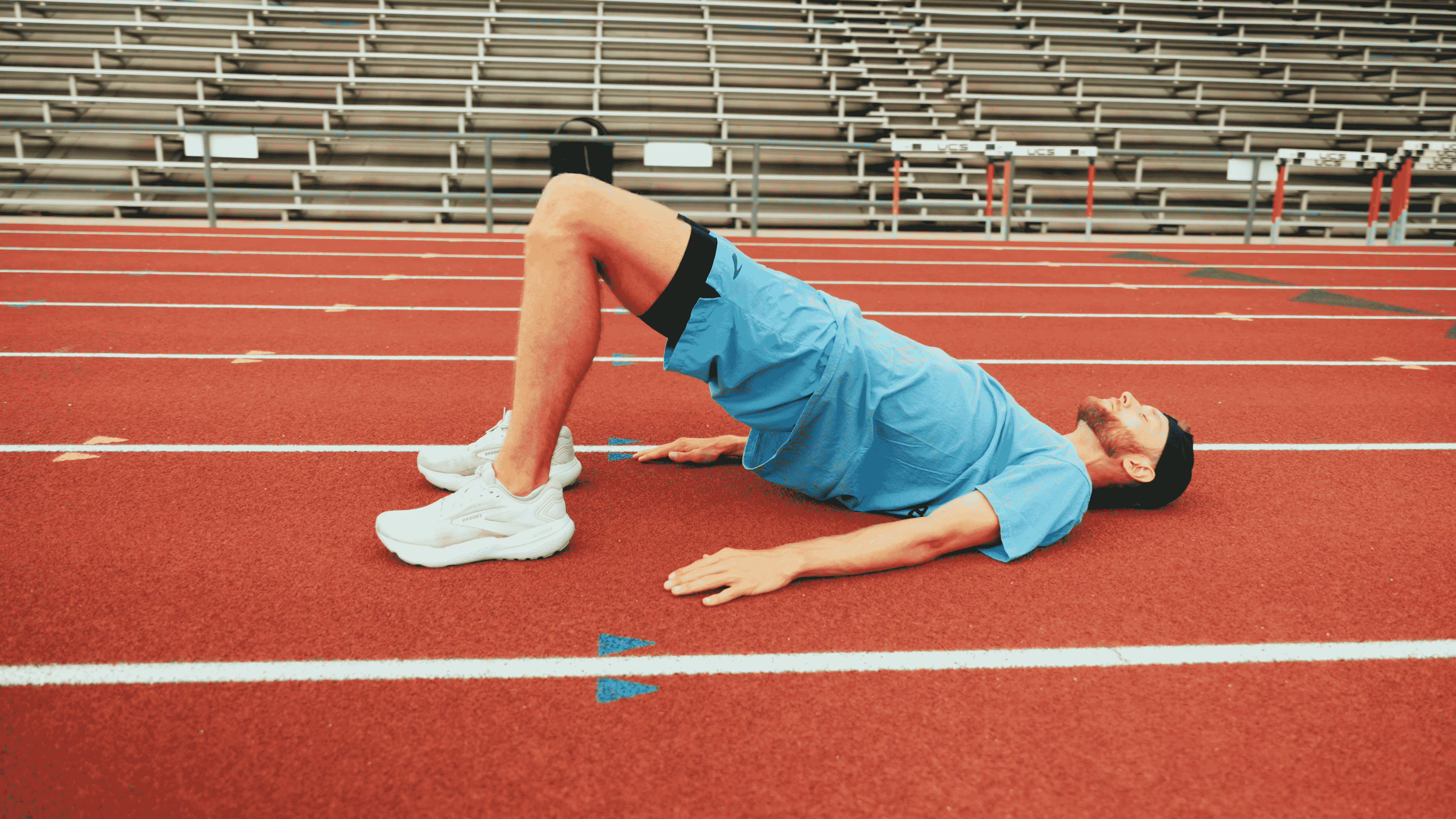After an intense workout, do you ever feel sore or stiff? Does it take days or even weeks before you feel back to normal? Muscle soreness and stiffness can interfere with your performance and motivation to stay active. So, what can you do to help avoid the adverse effects of muscle damage and get back to your routine? Exploring the best recovery tools for athletes can make a significant difference in reducing soreness and improving recovery time. Learning about muscle recovery can help you train more efficiently and maximize muscle growth without overtraining or injury. In this article, we’ll break down which muscles recover the fastest to help you return to your workout routine sooner.
One way to boost recovery between workouts is to improve your mobility. Pliability's mobility app offers targeted routines to enhance flexibility and range of motion, helping you bounce back faster and get back to training.
Which Muscles Recover the Fastest and Why?

Ever notice how your quads feel sore for days after a workout while smaller muscles like your biceps bounce back much faster? Muscle recovery depends on more than just how often you work on specific body parts.
According to Amy Baxter, MD, FAAP, a physician and pain researcher, three factors dictate how fast a muscle can recover:
- Size
- Function
- Attachments (aka what body parts it’s connected to)
Muscle Recovery: The Importance of Immobilization
To understand what happens when your body recovers from exertion, know that the key function isolates the muscle. “The goal of your body in recovery is to isolate that muscle and let it be still so that it has a chance to get better,” says Dr. Baxter.
Of course, several factors can prolong that process, all of which involve moving that muscle. “With an injury, your body wants to freeze that muscle so that lactic acid will come out of injured tissues and stick the muscles together to repair,” she says. “That’s going to rip when you accidentally move that muscle again, which re-injures the muscle and the process starts all over.”
Muscle Size
The muscle size that’s recovering is why your largest muscles can be sore for days on end. Muscles like your quadricep or gluteal muscles are relatively big and involved in many different sitting and standing motions, so these will take more time to recover.
This doesn’t mean smaller muscles won’t take long to repair. “Ironically in some situations, a tiny muscle that has to bear the burden of a lot of different activities may take longer to repair as well because it’s more difficult to isolate it,” says Dr. Baxter, bringing us to muscle function.
Muscle Function
Muscles you use daily will prolong the recovery process, and the more it’s worked (or injured), the longer that process could be. This is why muscle groups that bear weight will take longer to recover, regardless of how hard you went in your bicep or back workout compared to a lower body one.
“The size and function of a muscle are basically the job that the muscle’s doing, how frequently it has to do it, and then how big it is,” says Dr. Baxter. Examples include plantar fasciitis or tennis elbow, which are small but commonly used muscles.
Muscle Attachments
How your muscle is attached to the rest of your body also goes into the length of its repair process. “The general rule is that the better the blood supply is to a muscle, the faster it will heal,” says the physical therapist and Vionic Innovation Lab member Brian Hoke. “The fleshy part of a muscle has a lot of blood flow, so these problems heal pretty routinely. But the tendon that attaches the muscle to a bone often has less blood flow through it, which is why injuries to that part are slow to recover.”
He points to the calf as a prime example:
Pulling that muscle heals much more quickly than an injury to the Achilles tendon that attaches the calf muscle to the heel.
Related Reading
- What Is Active Recovery
- Why Is Recovery Important for Athletes
- Is Yoga Active Recovery
- Should You Be Sore After Every Workout
- Calves Sore After Running
- Why Are Ice Baths Good for Muscle Recovery
- What to Do on Recovery Days
- Why Is It Important to Include Recovery Time in a Workout Program?
- What to Drink for Muscle Recovery
How Can You Speed Up Your Muscle Recovery?

Learning and using the right strategies is all it takes to speed up recovery, promote muscle repair and perform at your peak.
Active Recovery: How Low-Intensity Exercise Can Help You Recover Faster
Active recovery is the last thing you want to do after an intense workout. Engaging in low-intensity activities, such as:
- Gentle Yoga
- Walking
- Swimming
The day after a challenging workout can enhance blood flow to muscles, reducing soreness and facilitating faster recovery.
Hot and Cold Therapy: The Surprising Benefits of Switching Temperatures
Switching between hot and cold treatments, like contrast baths or showers, can work wonders for sore muscles. Cold therapy helps reduce inflammation and numbs pain, while heat therapy loosens tight muscles and improves circulation. Some athletes even swear by cryotherapy, a quick blast of super-cold air to speed up recovery.
Supplements and Vitamins for Muscle Repair: What Works?
Proper nutrition plays a pivotal role in muscle recovery. Consuming carbohydrates and proteins post-workout replenishes glycogen stores and provides amino acids necessary for muscle repair. Supplements like branched-chain amino acids (BCAAs) may reduce muscle soreness and support recovery.
Vitamin C, known for its antioxidant properties, can aid tissue repair and reduce muscle soreness, while Omega-3 fatty acids are thought to decrease muscle soreness after high-intensity exercise.
Stretching and Foam Rolling: Why These Techniques Are Key for Recovery
Incorporating stretching and foam rolling into your routine can alleviate muscle tightness and improve flexibility. Foam rolling before and after workouts has been shown to enhance performance and help recovery by increasing blood flow to muscles and reducing adhesions in muscle tissues.
Related Reading
- Natural Muscle Recovery
- Is Sauna Good for Muscle Recovery
- Is Swimming Good for Recovery
- Benefits of Active Recovery
- How to Speed Up Muscle Recovery
- How to Get Rid of Sore Muscles Overnight
- Should You Workout When Sore
- Active Recovery vs Rest Day
- Active vs Passive Recovery
- How to Speed Up Muscle Strain Recovery
- Muscle Recovery Time by Age
- Recovery Methods for Athletes
7 Common Mistakes to Avoid During Muscle Recovery

1. Skipping Rest Days: The Mistake That Could Stall Your Gains
Pushing your body without adequate rest may seem like dedication, but it can lead to overtraining, muscle fatigue and even injuries. Every workout causes micro-tears in your muscle fibres, but rest is when your body repairs and strengthens them. Aim for at least one or two weekly rest days, especially after high-intensity sessions.
2. Poor Post-Workout Nutrition: What to Avoid After Exercise
What you eat after exercise plays a significant role in recovery. Choosing sugary or processed snacks deprives your body of the nutrients needed for muscle repair. Instead, focus on protein-rich meals paired with complex carbohydrates to replenish muscle glycogen stores and promote recovery.
3. Neglecting Stretching and Mobility Work: Why You Shouldn’t Skip Post-Workout Recovery
Skipping a post-workout stretch might save a few minutes but can leave your muscles stiff and prone to injury. Stretching and foam rolling improve flexibility, reduce lactic acid build-up and support a full range of motion. Adding 10 minutes of mobility work into your routine can significantly improve recovery.
4. Inconsistent Sleep Patterns: The Hidden Enemy of Muscle Recovery
Sleep is your body’s natural recovery tool, and inadequate or inconsistent sleep can disrupt muscle repair, slow recovery and even affect performance. Strive for 7-9 hours of quality sleep every night to ensure your body gets the necessary downtime to rebuild and recharge.
5. Overtraining Without Active Recovery: Why It’s Okay to Take It Easy
Pushing through soreness without active recovery can slow progress and lead to burnout. Active recovery exercises, like gentle yoga, walking or swimming, increase blood flow to your muscles and promote healing. Balance intense workouts with lighter activities to stay consistent without overloading your body.
6. Overlooking Hydration: How It Impacts Muscle Recovery
Dehydration can impair the transport of nutrients and waste removal, leaving your muscles sluggish and sore. Make hydration a priority during workouts and throughout the day, and add water-rich foods or electrolyte drinks into your diet to support muscle recovery after intense sessions.
7. Consuming Alcohol Post-Workout: Why It Slows Recovery
Alcohol interferes with the body’s recovery mechanisms by disrupting sleep and slowing muscle repair. While occasional drinks won’t derail your progress, avoiding alcohol immediately after workouts ensures your body can focus on healing and rebuilding.
Related Reading
- Which Magnesium Is Best for Muscle Recovery
- Hot or Cold Bath for Muscle Recovery
- Benefits of Massage Gun
- Foam Roller Benefits
- Chocolate Milk for Muscle Recovery
- How to Speed Up Muscle Strain Recovery in Back
- Causes of Poor Muscle Recovery
- Active Recovery Workout
- Active Recovery Stretches
- Best Recovery Tools for Runners
- Best Vitamins for Muscle Recovery
- Best Foods for Muscle Recovery
- Workout Recovery Tools
Improve Your Flexibility with Our Mobility App Today | Get 7 Days for Free on Any Platform

Pliability offers a fresh take on yoga, tailored for performance-oriented individuals and athletes. Our app features a vast library of high-quality videos designed to improve flexibility, aid recovery, reduce pain, and enhance range of motion. Pliability provides daily-updated custom mobility programs for those interested in optimizing their health and fitness.
It also includes a unique body-scanning feature to pinpoint mobility issues. If you're feeling limited by pain or your ability to move, Pliability aims to complement your fitness routine and help you move better.
Sign up today for 7 days absolutely for free on iPhone, iPad, Android, or our website to improve flexibility, aid recovery, reduce pain, and enhance range of motion with our mobility app.



.jpg)
.jpg)
.jpeg)


